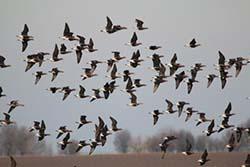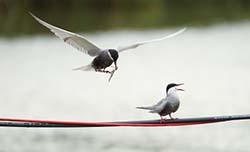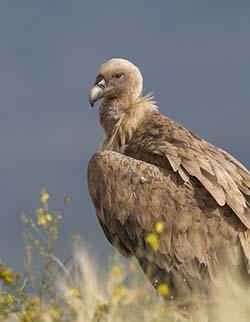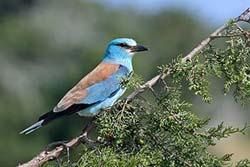
Migratory birds are vital for Europe’s biodiversity. Travelling thousands of kilometres each year, they pollinate plants, disperse seeds, and control pests. But their lives are at risk due to factors such as climate change, pesticides, power lines, intensive agriculture, and illegal poaching. Several LIFE projects are helping reduce the many threats these birds face.
Europe is home to more than 500 wild bird species but around a third of them are in danger of extinction. Adopted in 1979 and revised in 2009, measures under the Birds Directive are helping protect and enhance all 500 species. And, the EU Biodiversity Strategy 2030 aims to halt and reverse the decline of wild species, including migratory birds.
To celebrate the upcoming World Migratory Bird Day 2020, we are taking a look at some LIFE projects dedicated to safeguarding migratory birds, their migration routes and their habitats.
A wild goose chase
The Red-breasted goose is one of the most threatened goose species on the planet. This is a result of new agricultural practices negatively affecting its habitat, collisions with wind farm turbines and power lines, hunting, and extreme weather conditions like floods and drought. There is also a lack of information on the bird’s breeding range and exactly where it migrates to. With partners from Bulgaria, Kazakhstan, Romania, Russia, and Ukraine, the LIFE for SAFE FLIGHT team wants to find out more about this species and how to stop its numbers from dwindling. To achieve this goal, the team has tagged some 30 geese to learn more about their flyway and survival rates. Various national action plans for the goose are under development, while data is being collected on where the bird is located and the impact of hunting on populations.

Giving hope to a rare bird species
The Roseate tern is Europe’s rarest breeding seabird. It is under immense pressure from high tides, storms, predators and human disturbance. The recently completed LIFE Roseate Tern project focused on improving breeding conditions for the bird at core colonies in Ireland and the United Kingdom. LIFE funding helped partners to clear vegetation, create more terraces and increase the number of nest boxes and floating rafts for the tern. The birds were also equipped with special GPS transmitters that collected data about their feeding, roosting and breeding areas. As a result of these measures, the UK breeding population of the Roseate tern increased from 73 breeding pairs in 2013 to 131 pairs today.

Keeping birds safe from power lines
Power lines are a serious threat to many migratory birds. In Bulgaria, the team at LIFE BIRDS on POWER LINES wants to protect these birds from being needlessly killed in such a way. To this end, it has insulated dangerous electric lines and poles that pose a threat. Other preventative actions include installing special marking devices on power lines, to make them visible to birds, reducing the risk of collision. It also plans to make pylons safe by using various bird protection products. The team is, meanwhile, running an awareness-raising campaign on the project aimed at the wider public.

Saving small birds from illegal trapping and hunting
In Cyprus, the illegal hunting of small birds with nets and lime sticks covered with glue is widespread. Intensive forestry and agricultural practices have, meanwhile, changed the bird’s habitat drastically. Forest fires and a lack of water due to climate change is also reducing numbers.
The team behind LIFE FOR BIRDS developed and restored habitats for 11 bird species, including the European roller, Cretzschmar's bunting and European nightjar in three Natura 2000 sites on the island. The work involved planting fruit trees, creating small ponds and growing cereals. By restricting vehicle access, erecting warning signs and cameras, patrolling, and increasing fines for illegal hunting, the number of bird trappings fell by 60%. The conservation status of several of these species was up by 7.1% by the end of the project.

A friendly face for the Lesser kestrel
The Murge Appulo-Lucane region in southeast Italy is one of the most important breeding areas for the Lesser kestrel. But populations of this small bird of prey, which often winters in Africa, have decreased by 90% over the past century due to unsuitable agricultural practices, human disturbance, power lines and poisoning.
The Un Falco per Amico project team set out to increase the numbers of the Lesser kestrel in the area. It managed to do this by setting up breeding sites for the bird, saving around 700 wounded and trapped Lesser kestrels and restoring several hectares of land. The team also raised much awareness of the species, especially among school children, through holding site visits and via an information campaign. Also, 50 of the bird’s roosting sites now have legal protection.

Details
- Publication date
- 30 September 2020
- Author
- Executive Agency for Small and Medium-sized Enterprises
